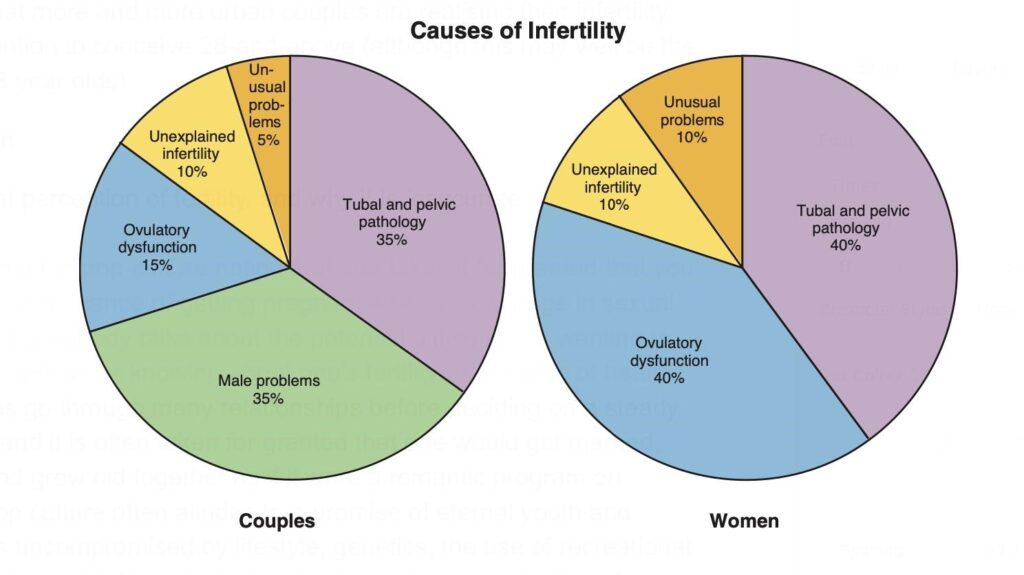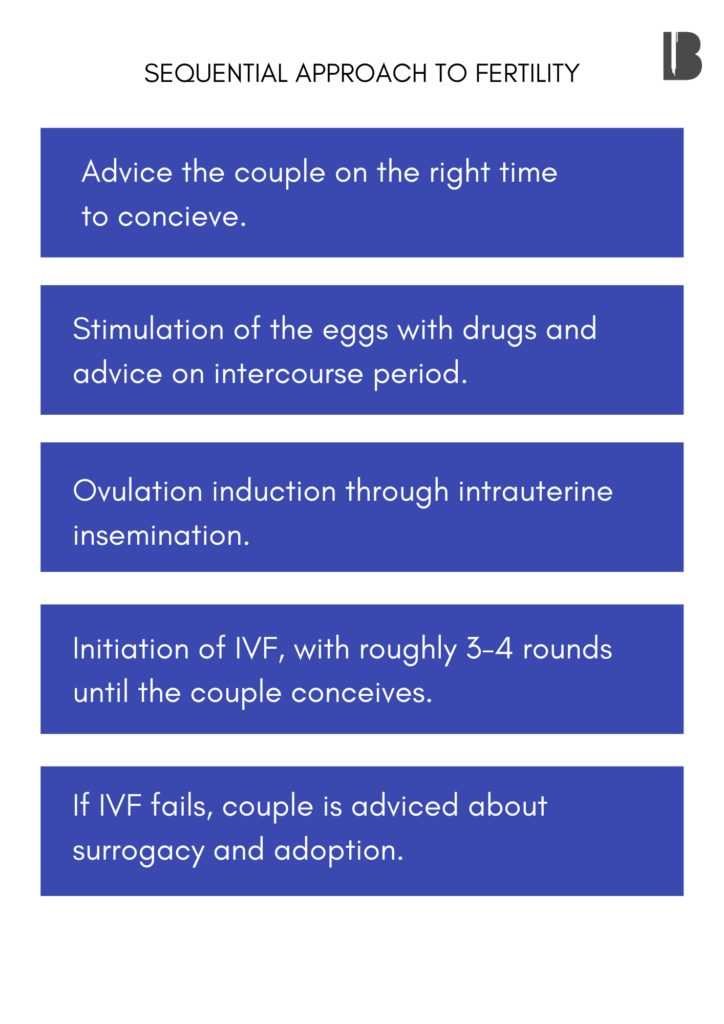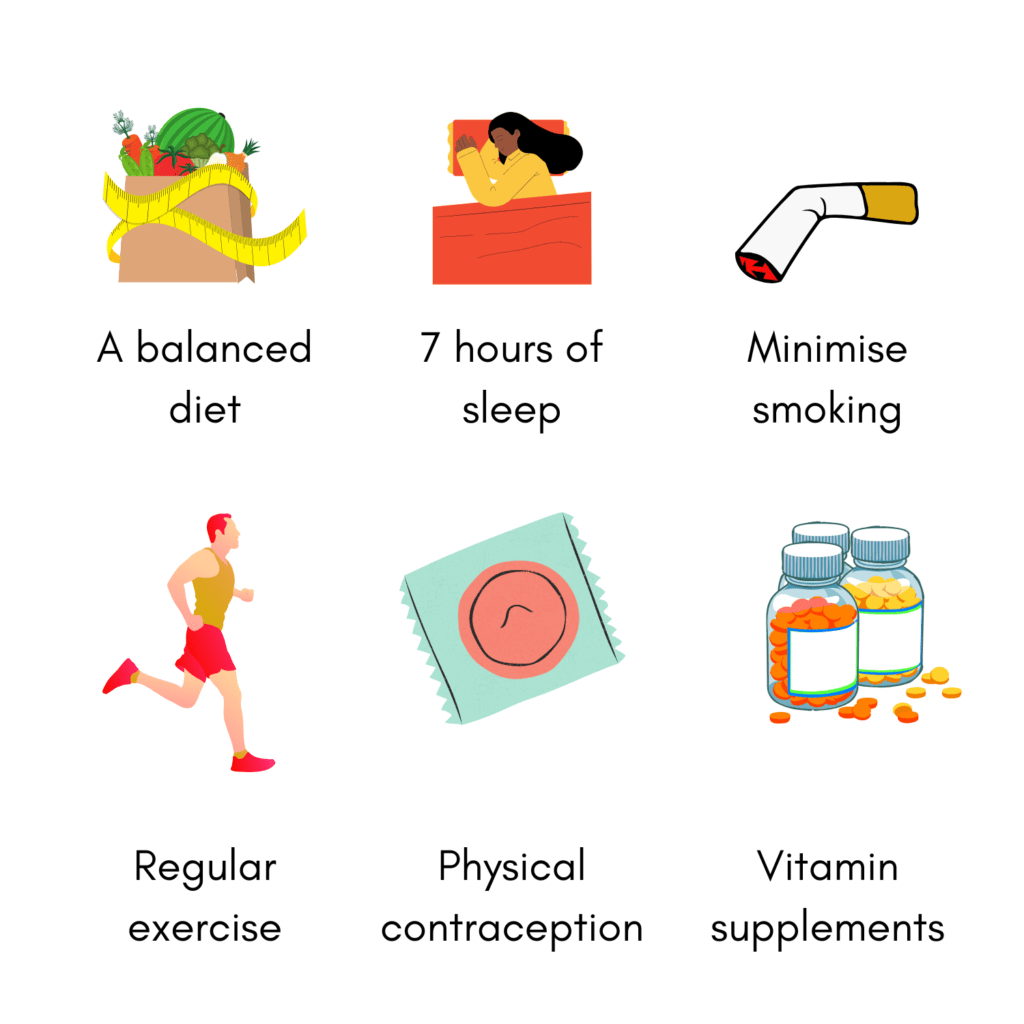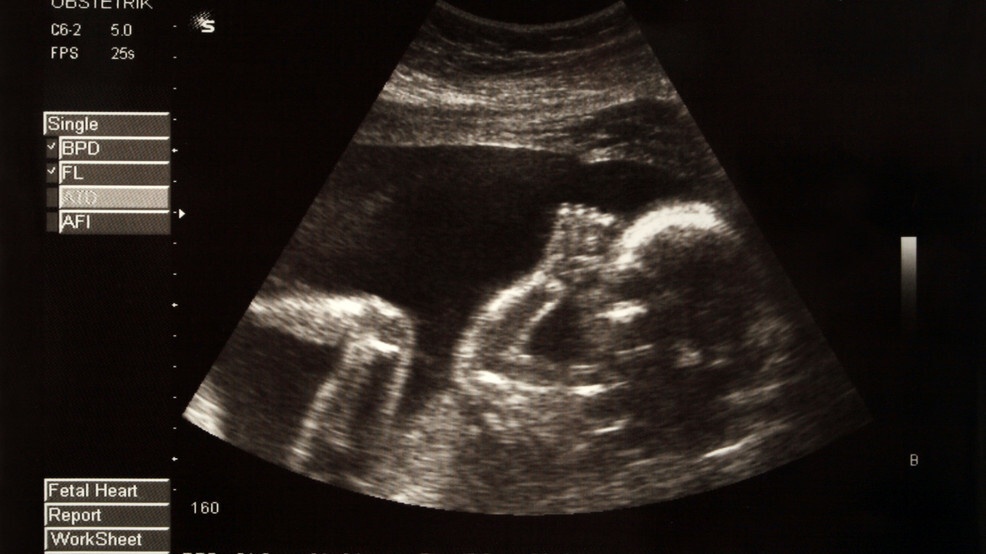How easy is it to get pregnant? Movies and TV shows will have us believe that pregnancies can occur at the drop of a hat. In today’s age, when premarital sex is commonplace, the most pressing worry amongst this age group is an unintended pregnancy or having to undergo an abortion. But due to rising stress levels, lifestyle choices, and substance abuse, more couples are in fact struggling with fertility. Rhea*, a 22-year-old woman, spoke about the concerns that she faces as a sexually active woman, “I am constantly worried that I might get pregnant from having sex, even when I use contraception. This anxiety has led me to take emergency contraceptive pills multiple times, which often have a negative impact on my menstrual cycle. While I do worry about pregnancy, I’ve never really thought about the possibility of being infertile.”
Infertility is the inability to conceive despite having regular, unprotected intercourse for 12+ months. India alone accounts for over 20 million couples each year who struggle with conception. Is the question of fertility relevant only to couples looking to conceive? While 18 to 30-year-olds may not have an immediate stake, their behaviours and lifestyle choices will determine future fertility outcomes. That is why awareness about fertility is crucial, as it can allow alterations in day-to-day life that can preserve a person’s fertility prospects.
Although only 10 to 15% of the population experience fertility issues, more couples are seeking fertility treatment with the progress of new technology, including artificial reproduction. Another reason that more couples have been seeking treatment is the rising age of pregnancy among women. More women can be found attempting to conceive at an advancing biological age when their fertility typically declines. Awareness and campaigns about assisted reproductive technology have also sparked conversations that have directed more couples to treatment.
What Factors Contribute to Infertility Struggles?
Treatment for infertility has to be targeted at the couple to ensure that no one partner is blamed as the “cause” of the infertility struggle. Amongst women, the reasons for fertility struggles may be ascribed to ovarian factors in 40%(most commonly polycystic ovaries), tubal and peritoneal factors commonly post-reproductive infection and, uterine factors which could be inborn or acquired defects. Previous pregnancy losses can also contribute to declining rates of conception in future successive pregnancies.

Syndromes such as PCOS can also impact the fertility of women. Sneha* is a 21-year-old woman with PCOS and spoke to The Bastion about the relationship between fertility and PCOS.
While PCOS doesn’t necessarily mean that a woman can’t conceive, it may mean more complications. I haven’t ever thought about the possibility that I may not be able to conceive a child at a later stage, mostly because I’m still a bit young to worry about that. I think that a lot of the lifestyle choices that I make because of PCOS are actually positive for fertility because my diet and exercise regime are quite strict. While I do see a gynaecologist regularly, I have never spoken to her about fertility, and neither have I seen a fertility expert.
— Sneha*
Previously, male factor infertility was thought to be uncommon, however, solely ‘male factor’ infertility accounts for 20% of all fertility issues. A combination of male and female factor infertility is visible in about 30-40% of couples.
The factors common to both genders brought on by the epidemic of lifestyle disorders include stress, sedentary work-life, very little time for family, or relaxation, lack of regular exercise, inadequate sleep, caffeine addictions, substance abuse, eating disorders, and eating processed and sugary foods. Rahul* is a 25-year-old man who spoke to The Bastion about such lifestyle choices, “When I smoke or drink, I don’t really think about the impact that it may have on my fertility levels. While people talk about liver and lung based issues that may arise, I don’t think they talk about infertility. These conversations are also ones that don’t come up in my male friend groups- I have never seen a doctor about my fertility. I do have a long term partner that I’ve been with, and we’ve worried about accidentally getting pregnant, but we’ve never discussed the possibility of not being able to conceive.” More and more young adults have also been making the choice to work night shifts. As a lifestyle choice, it impacts their regular circadian rhythm, which, when accumulated over the years, may contribute to reducing fertility levels.

Young adults often go through multiple relationships before they settle down with a partner. Ideas of fertility and pregnancy perpetuated by pop culture also lead young couples to believe that the trope of getting married and having children is a given in their lives. They often don’t even consider the possibility that they won’t be able to conceive, which leads to couples discovering very late in their lives that they are infertile. Priya* is a 29-year-old married woman who commented about her experiences with marriage and fertility.
Before getting married, I don’t think the concern of fertility ever even crossed my mind. My only concern was to ensure that I don’t get pregnant or catch an STD. My husband and I have spoken about wanting to have a child, but we’ve never seen a doctor about it. After my friend went through IVF last year, I have been a lot more concerned about my fertility. While my partner and I have had conversations about it, we’ve never gotten any tests done. I think I am partly afraid that the tests might reveal that I can’t have children.
— Priya*
In recent times, however, more couples have come forward to seek advice even before embarking on their journey to parenthood because of all the horror stories they have heard about people’s fertility struggles.
Is Infertility the End of the Road?
Mainstream media would have everyone believe that there is only one way to conceive a child and become a parent. This, however, is completely untrue as there are numerous options that one can explore to have a child.
Voluntary egg freezing, which can be done, after an assessment of one’s fertility, involves a process that requires in-vitro fertilisation and egg retrieval, which is a surgical procedure done under anaesthesia. This surgery is preceded by 3-4 months of egg stimulation using hormonal injections prescribed by a fertility expert. IVF refers to in-vitro fertilisation or an artificial reproductive technique that has seen rapid advances in medical technology. On average, the cost of one IVF cycle is approximately 1.5 lakhs and one requires at least 3 to 4 cycles on average for conception.
Another option that couples can explore is egg or semen donors especially if the couple is unable to conceive due to medically indicated poor quality of eggs or sperm.
Surrogacy laws in India have now been made stringent, with an aim to prohibit commercial surrogacy and exploitation of low-income women for this purpose. However, while doing so, the law has eliminated the possibility of same-sex couples, live-in couples, LGBTQ people, and single women from having access to this route.
‘Altruistic surrogacy’ is the only type of surrogacy permitted by the Surrogacy Act of 2021. Only a person that is already known to the couple (like a relative or friend) can carry the child with only medical compensation. Further, the couple would need a certificate from a doctor that indicates that the couple is infertile.
Celebrity couples have thus attempted surrogacy via foreign surrogacy channels that circumvent the laws applicable in India, famous examples include Shah Rukh Khan and Priyanka Chopra Jonas.

People looking to have children can always consider the possibility of adoption. Adoption is a process that can be attempted by single parents or couples, provided that the couple has had a stable marriage of 2 years. In the case of a single father, only a child of the same gender can be adopted. Couples who already have a child too can adopt, provided that they don’t have more than 3 children of their own. The minimum income to be eligible to adopt is ₹3000 per month. The process of adoption is strictly regulated by the Central Adoption Resource Authority, and on average takes about 2 years.
How Accessible Are the Alternatives?
There is no doubt that the process of going through fertility treatment can be an expensive affair. Even the process of regular scans every few months can easily range from ₹12,000 to ₹15,000, per cycle. The intrauterine insemination procedure costs about ₹10,000 to ₹20,000 per procedure, and can also be attempted about 3 to 4 times in addition to the medicines and regular scans. IVF cycles can be prohibitively expensive for some and can amount to about ₹8 lakhs over a year.
Social stigma and taboos often push women and men alike into a frenzy about trying to conceive or having a baby within the first few years of marriage. However, due to financial constraints or career pursuits, the process of conception is at times delayed, which may contribute to fertility issues. Social acceptance of adoption and conversations about surrogacy is now much more prevalent, but there still is a long way to go. The number of adoptions within India in 2020 was 3142 within India and 412 inter-country adoptions. Accepting the setbacks in having a biological child is a huge psychological event, and requires tremendous support from the partner, friends and family.
The number of couples suffering from infertility is not adequately matched by the number of providers who are trained in the management of fertility. While clinics in the cities have been mushrooming, the rural areas of India still do not have adequate access to providers.
Voluntary egg freezing, although a huge advance in science, is not a boon for all. The complex technology involves high monetary costs, which can be prohibitive to someone in the early stage of their careers or single women, who may require it. Apart from expenses, it involves a lot of hormonal injections and regular scans that do take a physical and mental toll on one’s health.
Now that you know what your options are when it comes to fertility, what are the things you can do to protect your own fertility, even if having a baby is a far removed thought at present?
What Can Be Done About the Declining Fertility Rates?
Teenagers need to be educated not only about safe sex, but also about safe contraceptive choices, and the impact of lifestyle choices on future fertility prospects.

While the rural poor have better access than before to contraception, the urban rich are suffering from lifestyle and age-related disorders contributing to declining fertility. The total fertility rate in India, which was at 6% in the 1950s is now 2% as per the latest NFHS-5 survey. Also, the utilisation of contraceptive methods has increased from 54% to 67%.
Reproductive health is a highly specialised branch of medicine. Just because a person calls themselves a fertility expert need not mean that they are well versed with the contours of reproductive health. For instance, several ‘quacks’ and ‘healers’ may claim to be fertility experts, but this is not the same as being a specialised reproductive health expert. Due to the sheer amount of advice from different sources, couples may feel the urge to ‘doctor shop’- hop from one doctor to the other. This is a futile exercise as couples lose time in this endeavour, time that could have been spent trusting just one specialist.
As a country of contradictions, India seems to be making progress as a country on the whole, but the male uptake of family planning measures leaves much to be desired. The pressure on women both to conceive, as well as do away with reproductive capacity after completion of conception, is unfair and has to go.
Although declining fertility rates have been attributed to higher career aspirations of the modern woman, the reality is that earlier conception is not favoured because of the existing structure of society. If society allowed women to continue to work, with equal pay, maternity benefits, and access to child care, the delay in conception could be avoided entirely.
As the adage goes, Acting “now” rather than later is the truth even in the diagnosis and management of infertility.
Featured image of a foetus in the womb. Courtesy KATV News on Twitter.






